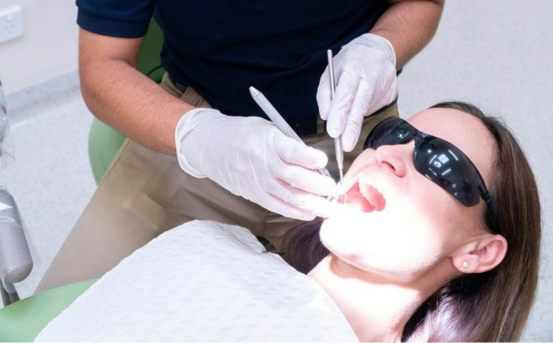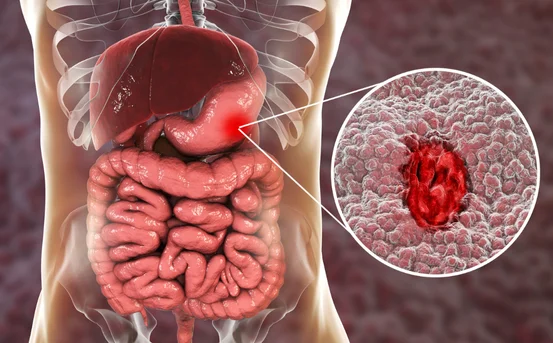One of the most effective solutions for this condition is gum graft surgery, a specialized periodontal procedure designed to restore lost gum tissue, cover exposed roots, and prevent further deterioration of the gums and supporting bone. Whether caused by gum disease, aggressive tooth brushing, aging, or genetic factors, gum recession can be both a functional and cosmetic concern.
Fortunately, gum grafting is a safe, minimally invasive, and highly successful treatment that can not only improve your oral health but also rejuvenate your smile. We’ll explore everything you need to know about the treatment for gum graft surgery, including types of grafts, the procedure, recovery tips, and expected outcomes so you can make an informed decision for your dental health.
What is Gum Graft Surgery?
Gum graft surgery, also called gingival grafting or periodontal plastic surgery, is a dental procedure to correct gum recession. Receding gums can lead to exposed tooth roots, sensitivity, and an increased risk of tooth decay or even tooth loss. A gum graft replaces lost gum tissue and restores the protective barrier around the teeth.
The treatment involves transferring gum tissue from another part of the mouth, usually the palate or using donor tissue to rebuild the receding areas.
Why is Gum Graft Surgery Needed?
Gum recession can result from various causes, including:
- Periodontal (gum) disease
- Aggressive tooth brushing
- Poor oral hygiene
- Tobacco use
- Orthodontic treatment
- Grinding or clenching teeth
- Genetic predisposition
If left untreated, receding gums can lead to:
- Tooth root exposure
- Pain or tooth sensitivity
- Root caries (decay)
- Loose teeth or tooth loss
- Aesthetic concerns (long-looking teeth)
Gum graft surgery helps prevent further gum loss, reduces tooth sensitivity, and improves the appearance of your smile.
Types of Gum Graft Surgery
There are three main types of gum graft procedures based on your dental condition and the surgeon’s recommendation:
1. Connective Tissue Graft :- This is the most common gum graft. A flap is cut in the roof of your mouth, and tissue is removed from underneath (sub epithelial connective tissue). This tissue is then stitched to the area of recession.
2. Free Gingival Graft :- In this method, a small amount of tissue is taken directly from the palate and attached to the receding gum line. It is usually done when the patient has thin gums and needs more bulk.
3. Pedicle Graft :- This technique uses gum tissue adjacent to the affected tooth. A flap is partially cut and pulled over the exposed root.
In some cases, allografts (donor tissue from a tissue bank) or xenografts (animal-derived grafts) may be used as alternatives to harvesting tissue from the patient’s own mouth.
What to Expect During the Gum Graft Procedure?
- Consultation and Diagnosis :- Your periodontist will evaluate the extent of gum recession and decide on the appropriate graft type. X-rays and periodontal charts are often used for assessment.
- Local Anesthesia :- The area is numbed using a local anesthetic, ensuring the procedure is pain-free.
- Tissue Harvesting and Grafting :- Tissue is either removed from the palate or sourced from a donor and placed over the affected site. The gum graft is then stitched into place.
- Dressing and Healing :- A periodontal dressing may be applied to protect the graft site, and you’ll receive detailed post-operative instructions.
Gum Graft Surgery Recovery Timeline
Recovery typically takes 1 to 2 weeks, although complete healing can take up to 4–6 weeks depending on the graft type and patient health. Here’s what to expect:
- Day 1–3 :- Swelling and mild discomfort, managed with prescribed pain relievers.
- Day 4–7 :- Initial healing begins; soft tissue starts to integrate with existing gums.
- Week 2–4 :- Graft stabilizes; stitches may be removed.
- Week 4+ :- Normal function resumes; you may return to a regular diet and brushing.
Avoid hard, spicy, or hot foods, and follow all your dentist’s aftercare instructions for best results.
Gum Graft Surgery Aftercare Tips
Post-operative care is crucial for a successful outcome. Here’s how to take care of your gums after surgery:
- Avoid Brushing the Surgical Area :- Don’t brush or floss near the graft site until your dentist advises.
- Use Antibacterial Mouthwash :- Your dentist may prescribe a rinse like chlorhexidine to prevent infection.
- Eat a Soft Diet :- Stick to smoothies, mashed potatoes, yogurt, soups, and soft fruits for the first few days.
- Avoid Smoking and Alcohol :- These can delay healing and increase the risk of graft failure.
- Use Ice Packs :- Apply cold compresses on the cheek for 15–20 minutes at a time to reduce swelling.
- Take Medications as Prescribed :- Antibiotics and pain relievers must be taken regularly to prevent complications.
Gum Graft Surgery Risks and Complications
While generally safe, gum grafting does carry some risks:
- Graft rejection or failure
- Bleeding or infection
- Palate sensitivity or discomfort at the donor site
- Uneven gum line or color mismatch (rare)
Choosing a qualified periodontist and following post-operative care significantly reduces these risks.
Advantages of Gum Graft Surgery
- Protects Tooth Roots :- Prevents root exposure and associated decay or wear.
- Reduces Sensitivity :- Covers the exposed roots, reducing discomfort while eating hot or cold foods.
- Improves Aesthetics :- Restores a natural-looking gum line for a more confident smile.
- Enhances Oral Health :- Rebuilding gum tissue helps prevent further periodontal issues.
Alternatives to Gum Graft Surgery
If your gum recession is mild or caught early, your dentist may recommend non-surgical treatments, such as:
- Scaling and Root Planning (Deep Cleaning)
- Desensitizing Agents or Fluoride Gels
- Pinhole Surgical Technique (minimally invasive)
- Gum Regeneration using PRF/PRP therapy (platelet-rich fibrin)
Always discuss all treatment options with your dentist to determine what suits your condition and budget best.
Conclusion
Gum graft surgery is a proven, effective treatment for gum recession and is often necessary to protect your teeth and maintain oral health. It’s a minimally invasive outpatient procedure with lasting benefits — from reducing sensitivity to improving your smile’s appearance.
Whether you opt for a connective tissue graft, free gingival graft, or donor graft, your periodontist will guide you through every step, from consultation to full recovery. With proper care, gum grafting can offer life-changing results.
If you’re noticing signs of gum recession, don’t delay. Consult a periodontist or dental specialist today to explore treatment options for gum graft surgery and take the next step toward a healthier, more confident smile.























